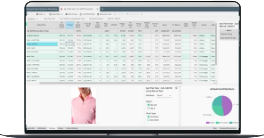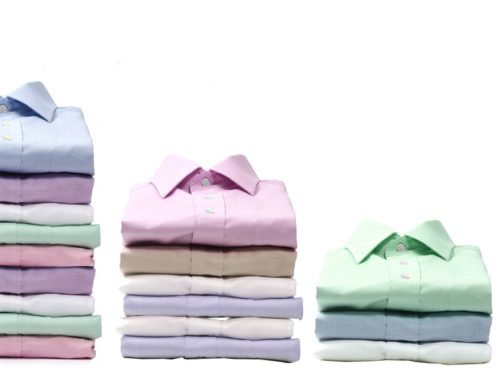Most retailers know you can’t send the same assortment to every location. It just doesn’t work. If you tried it, your smallest stores would be overwhelmed with excess inventory they’d struggle to sell. And your biggest, busiest locations would have empty shelves.
But creating a unique assortment for each and every customer touchpoint doesn’t work either. The level of planning detail required is totally unrealistic.
Instead, most retailers use some form of clustering – buying for groups of stores with similar characteristics – to solve this problem. But retail store clustering isn’t a perfect process. In fact, a lot of retailers have trouble getting their clusters right.
See also: What Is Retail Store Clustering?
Despite best efforts, problems persist. Allocation gets buys that don’t match up with reality, and has to come up with creative ways of making everything work. Allocators do their best, but their hands are tied. Some stores end up with too much inventory and struggle to sell it all. Others don’t get enough and sell out early, leaving customers disappointed. Potential profits go unrealized and markdowns skyrocket.
If this sounds like your business, your retail store clustering method might be to blame. Here are a few of the most common problems we see when it comes to clustering and what to do about them.
You’re not clustering at all
No surprise here. If you’re not using clustering that means one of two things. Either you’re planning buys for each individual store, which is tedious, and time-consuming, and nearly impossible to scale. Or you’re treating all your stores as if they’re the same and basing your buy quantities on estimates. Whichever side you fall on, choosing not to use clustering means you risk big mistakes that could be costly.
You’re not clustering until it’s too late
If store clustering doesn’t happen until the allocation process, you’re stuck with an imprecise assortment and buy quantity. We recommend clustering before you buy assortments. That way you can buy assortments that align with customer preferences upfront, and get a precise number of units before you commit to a purchase order. Your buys will be more accurate, and your allocators will thank you.
You’re only clustering at a store level
If you’re using sales volume groups, and treating all “A” stores as if they’re the same, you’re only accounting for one dimension of customer demand. Just because two stores move a lot of inventory, that doesn’t mean their customers share the same preferences. We suggest conducting retail store clustering at a product class level. This does a much better job of accounting for customer preferences. You can buy the right quantities of every product for each store without having to generalize.
Your clusters are out of date
As seasons change, so do customers’ needs. If you’re only updating your store clusters once per year, you’re missing an opportunity to give your customers what they want. If a store is an “A” for a product class in Spring and a “C” in Autumn, but you cluster once a year and call it a “B,” you’re guaranteed to always be wrong. Allocation has to find a way to get more inventory to the store in Spring, and get rid of it in Fall. It’s a headache, and it’s wasteful. We recommend updating your store clusters on a seasonal basis. This keeps your clusters fresh and in line with customers.
You’re still using Excel for buy plans
Human beings can only process so much information, and spreadsheets have their limits too. Simply put, if you follow our recommendation and cluster by product class and sales volume, Excel cannot keep up.
For example if you buy based on average store sales on a seasonal basis, that’s only four buy plans in a year. That’s easy for people and Excel to handle, but it’s lacking precision.
See also: 7 Things you Need To Automate For Your Buyers Right Now
If you expand on this, and cluster for 250 product classes using 5 sales volume groups, you’ll have a much more precise buy. But you’ll end up with 5,000 different buy plans (4 seasons x 250 classes x 5 clusters = 5,000), which is more than enough to confuse your buyers and crash Excel so badly your computer will melt.
And that’s before you layer in other dimensions of customer demand. Once you start customizing your buys for different countries, currencies, sales channels and types of stores, you can attain an incredible level of accuracy, but you also end up with tens of thousands of unique assortments. Spreadsheets aren’t up to the task. Assortment planning software can help you manage all of this information without slowing down computers or making buyers go cross-eyed.
Fix your clusters
If you’re using retail store clustering to plan assortments, you’re already on the right track. But there’s a good chance your clustering method isn’t working because it takes too broad an approach. Instead, you need to dive deeper and do more to build your clusters around your customers rather than just stores.
By clustering before you buy assortments, clustering at a product class level, and keeping your clusters fresh, you can get much more precise buy quantities. The result is less pressure on allocation, better sell-throughs, and fewer markdowns. Customers find the items they want, and loyalty improves.






















